Lyft要怎样击败优步?
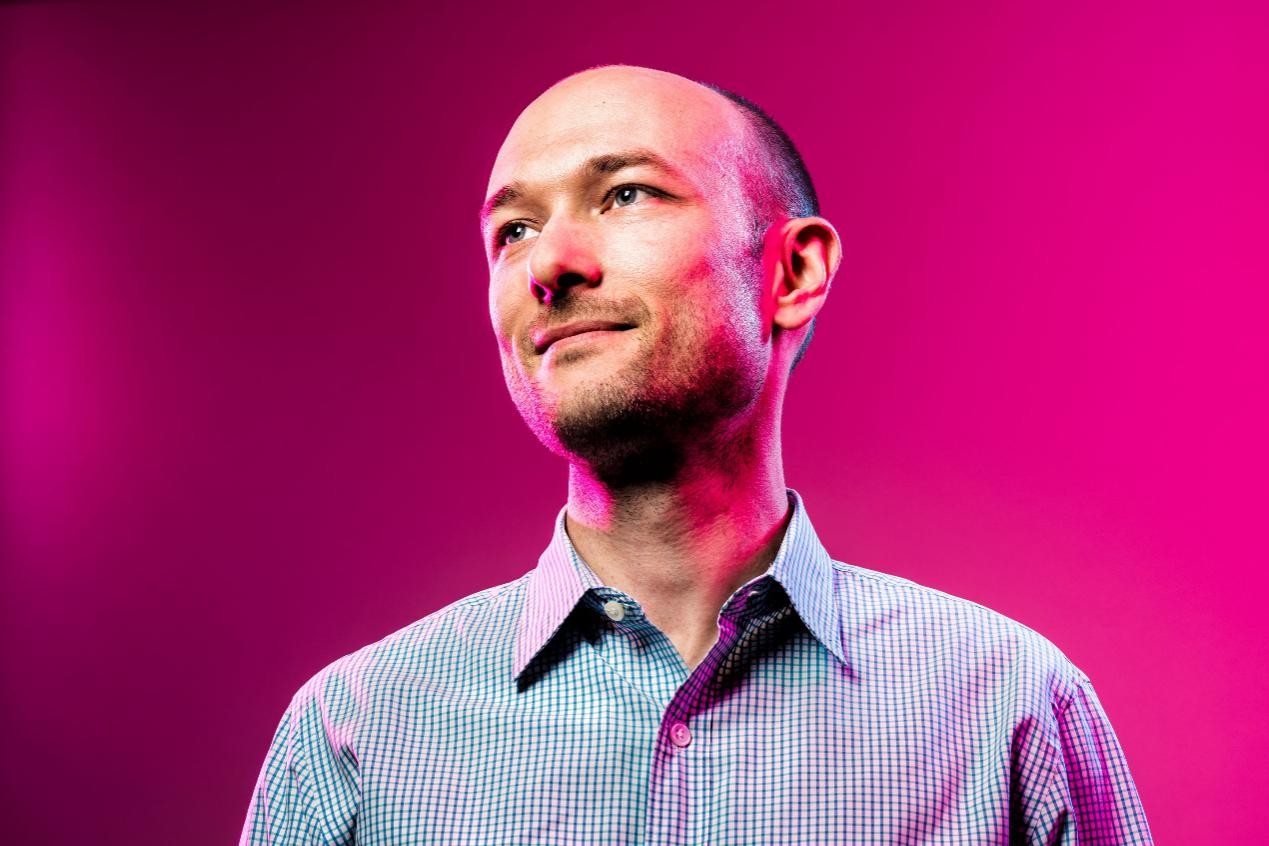
|
几乎每个看过儿童读物的人都知道龟兔赛跑的故事。在故事里,自大的兔子放了一通狠话之后,一溜烟把两栖的乌龟对手甩在身后。然而,兔子到达终点前信心爆棚地睡了一觉,步伐迟缓的乌龟最终赢得比赛,成了缓慢坚定最终胜利的代表。 现在可以用一些现代元素重新解读下故事。让优步当兔子,这是一位傲慢的领跑者,也是拼车世界的主宰,但因一些烦心事元气大伤,比如解雇高管,公司存在性别歧视以及涉嫌侵犯专利。谁是乌龟呢?自然是Lyft——虽说步子没那么慢,但至少Lyft没有竞争对手那么自负,行事也更加小心。 到目前为止,兔子,也就是优步依然遥遥领先,类似童话的结局要再等几年才能出现。不过,如果说拼车市场千年老二Lyft会有什么机会的话,那就是现在。 今年优步遭遇各种磕磕绊绊,简直就像火车事故一样惨烈。前工程师公开宣称优步内部充满性别歧视,再比如谷歌母公司Alphabet旗下的自动驾驶汽车初创企业Waymo起诉优步侵犯知识产权,6月底联合创始人兼首席执行官特拉维斯·卡兰尼克令人震惊的辞职成了这出戏的高潮(卡兰尼克仍留在董事会,但优步直到7月中旬仍未任命新的CEO)。种种坏消息的背景则是媒体一直报道称优步对员工和消费者冷酷无情,而且藐视当地法律。 |
Just about everyone who has ever read a children's book knows the fable of the tortoise and the hare. That’s the one about the footrace in which the cocky hare sprints ahead, leaving his reptilian rival behind in a cloud of dust and trash talk—and then takes an overconfident nap before reaching the finish line, allowing the plodding tortoise to win in a blaze of slow-but-steady glory. Now imagine the story with a few modern twists. The bunny-proxy is Uber, the brash front-runner that dominates the world of ride sharing—but has hamstrung itself with debilitating distractions like executive firings and allegations of systemic sexism and patent infringement. The tortoise? That’d be Lyft—which, if it isn’t exactly plodding, is at least less braggadocious and more cautious than its competitor. For now, the hare—er, Uber—remains very much in the lead, and any fairy-tale ending is years away. Still, if ever there was a chance for Lyft, the perennially distant No. 2 in the ride-sharing duopoly, to pull ahead of Uber, this would be it. Uber’s stumbles have been a can’t-look-away train wreck this year. They’ve ranged from a former engineer going public with claims of a sexist work environment, to the proceedings in a lawsuit filed by Waymo, the driverless-tech arm of Google parent Alphabet, accusing Uber of infringing on its IP. And they culminated with the stunning resignation of cofounder and chief executive officer Travis Kalanick in late June. (Kalanick remains on the board; as of mid-July Uber had yet to appoint a new CEO.) All this has played out against a media backdrop in which Uber has been depicted as ruthless with employees and customers and contemptuous of local laws. |
|
兔子身上疾风暴雨般的坏消息却推动了乌龟前进。通过信用卡数据追踪消费趋势的TXN Solutions称,2015年6月至今,优步在美国拼车市场的份额已从90%降至75%。最大单月跌幅出现在今年1月,当时一些纽约出租车司机集体罢工,抗议特朗普总统之前提出的入境禁令。刚开始,该区域内优步车辆启动了“提价”功能,原因是拼车需求增多;随后优步宣布关闭提价并下调费率,批评人士指责优步坑了罢工的司机。虽然优步表示外界误解了措施本意,但结果是市场份额当月下跌了4个百分点(Lyft对入境禁令如何反应?该公司的几位创始人承诺,将向美国公民自由联盟捐款100万美元)。同时,今年2月以来Lyft的市场份额从21%增至25%。也有其他公司称Lyft的市场份额已经达到30%。 落后者迅速增长,领先者优步则不断下滑,在硅谷内外也产生巨大的潜在影响。对跑在领先者优步来说,时间点简直不能更糟。 科技圈里的投资人以及各种亲朋好友,要么投了优步要么就投了Lyft。优步通过股票和债务筹集了大约140亿美元资金,风投公司、私募基金和高净值个人参投方超过70个,其估值也达到690亿美元,成为历史上估值最高的初创公司。Lyft同样动作迅速——融资额为26亿美元,出资人名单也一样吸引眼球,其中包括今年5月筹款6亿美元的一轮融资,Lyft的估值随后达到75亿美元。 两家公司的投资人都热切盼望着回报。但对优步来说,最近的事件或许让回报的“终点线”又远了一些。加拿大皇家银行资本市场分析师马克·马哈尼说:“优步的混乱程度几乎前所未有。我估计即便优步打算过上市,日期也只能大大延后。”其他人相信,随着优步陷入混乱,对未来成长非常重要的投资人和合作伙伴可能不会继续支持。一位不希望表露身份的高管指出:“如今局势彻底扭转只需最后一根稻草。我们内部讨论时都认为,2020年以后优步不再是主要参与者。” 所有风险因素中,投资人的钱甚至都不是最重要的。从买车到拼车已成为汽车行业历史上商业模式最大的颠覆之一。不过拼车市场的领先者也会在另一场更重要的转型中发挥核心作用,即转向自动驾驶汽车。技术进步、经济趋势以及安全和环境方面的顾虑正合力把无人驾驶车辆推向主流,而拼车服务有可能是相当多人接触到无人驾驶车的途径。优步-Lyft之争的胜者可能会重新定义城市蓝图、交通政策、乃至人们的互动方式,从而真正成为无处不在的大型消费品牌。 Lyft和优步都在投资开发自动驾驶汽车。直到最近,优步一直抢占先机,尤其在自主技术研发,开展合作以及启动自动驾驶试点项目等方面。但最近Lyft开始奋起直追——2016年初Lyft跟通用汽车签订了第一份无人驾驶汽车合作协议,最近又和麻省理工出身的自动驾驶初创公司NuTonomy签署了协议(与两家公司合作的试点项目预计将在今明两年启动)。今年5月有消息称Lyft又多了个合作伙伴,而且是因为打官司而成了优步肉中刺的Waymo。Waymo首席执行官约翰·克拉夫切克说:“跟Lyft的合作轻松又简单。” 本周晚些时候,Lyft将披露迄今为止迈向自动驾驶最大的一步——开发一整套技术,既包括硬件也包括软件,方便汽车厂商出产的车辆改造成无人驾驶汽车,而且可以轻松融入Lyft的乘客网络。有了这项新技术,Lyft向潜在合作伙伴推介时又多了一个卖点:我们有希望获胜,而且我们会提供工具协助你一起赢。 同样,优步很快发现自动驾驶是自己愿景的核心(这几年它一直在开发上述多项技术。)同时,虽然最近受到非议,但优步依然在非常健康地成长。公司发言人在发送给《财富》杂志的电子邮件中表示:“我们公司比以往更加强大,而且我们正在集中精神开发市场上最好、最富有创意的产品。”(优步拒绝了高层接受采访并留下记录的请求。) 超越优步并非易事。但无人驾驶技术有可能把Lyft提升到跟优步并驾齐驱的位置,甚至更高,更不用说可以让Lyft盈利了(据说2016年Lyft实现收入约7亿美元,亏损6亿美元左右;优步公布的数据是亏损28亿美元,收入约65亿美元)。在今后的无人驾驶领域,两强有共存的空间吗?也许。但在这场压力很大的竞赛中,赢家得到的可远不止说大话的权力。 Lyft首席执行官洛根·格林和总裁约翰·齐默已经公事了10多年。语调轻柔的格林负责Lyft的产品和工程团队;齐默更有活力,他是Lyft的公共形象(也负责营销和政府关系等部门)。他们的同事、Lyft负责消费者体验的副总裁玛丽·温菲尔德说:“我喜欢把他们看作公司的大脑和心脏。” 仲夏的一个下午,我终于见到了工作中的二人组。在距旧金山海边棒球场几步之遥的Lyft总部,格林和齐默与我对坐在会议室的两端。他俩给人的感觉几乎是形影不离。两人都住在附近的伯克利市,只相距两个街区,大多数情况下一起拼车上班(最近,在从中国出差回来的航班上,他们一起看了音乐喜剧片《完美音调》)。两个人都是33岁,已婚,有年幼的子女。虽然一个出生在美国西海岸,另一个出生在东海岸,但他们的生活已经并行了很长一段时间。 |
The stormy news has put a wind at the tortoise’s back. Since June 2015, Uber’s share of the U.S. ride-hailing market has declined from 90% to 75%, according to TXN Solutions, a firm that uses credit card data to track consumer trends. The steepest single-month decline came in January, when some New York taxi drivers stopped working to protest President Trump’s original travel ban. First, Uber’s “surge pricing" kicked in in the area, because there was more demand for rides; then, when Uber announced it was turning surge pricing off and lowering its fees, critics attacked it for undercutting the striking drivers. Uber has said that its actions were misunderstood, but its market share dropped four percentage points that month alone. (Lyft’s response to the ban? Its founders pledged to donate $1 million to the American Civil Liberties Union.) Meanwhile, since February, Lyft’s market share has increased to 25% from 21%. Other firms have put Lyft’s share as high as 30% The underdog’s growth and Uber’s deceleration have massive potential ramifications in and out of Silicon Valley. And for the front-runner, the timing could hardly be worse. Pretty much every tech investor and their mother has put money in one or the other service. Uber has raised about $14 billion in equity and debt financing from more than 70 venture capital firms, private equity funds, and high-net-worth individuals, attaining a valuation of $69 billion, which makes it the most valuable tech startup ever. Lyft, meanwhile, is no slouch: It has raised $2.6 billion from an equally impressive “who’s who” list, including $600 million in May in a funding round that gave it a valuation of $7.5 billion. Investors on both sides will soon be itching for a return—and for Uber, recent events may have pushed that finish line farther away. “The amount of dislocation at Uber is almost unprecedented,” says Mark Mahaney, an analyst with RBC Capital Markets. “I would assume that Uber has materially pushed back whatever IPO date they had.” Others believe that Uber’s dysfunction may deprive it of the future investors and corporate partners it needs to keep growing. “All it takes is one more issue before momentum is completely shifted,” says one automotive executive, who did not want himself or his company to be identified. “We’ve had internal discussions, and we don’t think Uber is a major player after 2020.” And yet investor financing isn’t even the biggest prize at stake. The shift from car ownership to car sharing already represents one of the biggest business-model disruptions in the auto industry’s history. But whoever has the lead in ride sharing will also play a central role in an even more consequential transformation: the pivot toward autonomous vehicles. Technological advances, economic imperatives, and safety and environmental concerns are converging to push driverless cars into the mainstream—and ride-sharing services may be the way much of the public gets introduced to them. The winner of the Uber-Lyft contest could help redefine the blueprints of our cities, our transportation policies, and even our modes of interacting with each other—and become a truly huge, ubiquitous consumer brand. Both Lyft and Uber have invested in autonomous vehicles development. But until recently, Uber had a significant head start in building its own technology, partnering with others and launching self-driving pilots. More recently, though, Lyft has started to catch up. The company inked its first driverless-car partnership, with General Motors, in early 2016, and more recently added another deal, with MIT spinoff NuTonomy (pilots with both companies are expected to start launching this year and the next). In May, it came out that Lyft had another partner —none other than Waymo, the litigious thorn in Uber’s side. “It was an easy and straightforward partnership to make,” says John Krafcik, CEO of Waymo. And later this week, Lyft will announce its biggest leap yet toward an autonomous future—the development of a suite of technologies, both hardware and software, that will allow any manufacturer to turn its vehicles into driverless machines and to easily integrate with Lyft’s network of passengers. With the new tech, Lyft is offering a new pitch to potential partners: We’re in it to win it, and we’ll give you tools that’ll make it easier for you to win too. Uber is quick to note that self-driving is core to its mission (it has been developing many of the above technologies for a couple of years now) as well, and that it is still growing at a more-than-healthy clip despite the recent controversies. “Our business is stronger than ever, and we’re keeping our heads down to build the best and most innovative products out there,” a spokesperson said in an email to Fortune. (Uber declined to allow an on-the-record interview with an executive.) Leapfrogging Uber won’t be easy. But driverless tech could elevate Lyft to parity, or better—not to mention make it profitable. (Lyft reportedly brought in revenue of about $700 million and lost about $600 million in 2016; Uber says it lost $2.8 billion on revenue of about $6.5 billion.) Is there room for two giants to coexist in a driverless future? Perhaps. But in this high-pressure race, the winner gets far more than bragging rights. Zimmer and Logan Green, Lyft’s CEO, and its president, John Zimmer, have worked together for more than a decade. The soft-spoken Green oversees Lyft’s product and engineering ranks; the more spirited Zimmer is the public face of the company (he also drives divisions like marketing and government relations). Says one Lyft colleague, VP of customer experience Mary Winfield: “I like to think of them as the head and the heart.” On a midsummer afternoon, I get to see the whole corpus in action. Green and Zimmer sit across from me in a conference room at Lyft’s headquarters, steps away from San Francisco’s waterfront ballpark. The two give the impression of being almost inseparable. They live just two blocks from each other in nearby Berkeley, and carpool in most days. (On a recent flight back from a business trip to China, they watched the musical comedy Pitch Perfect together.) Both are 33 years old, and married with young children. And while they were born on different coasts, their lives have been on parallel tracks for a long time. |
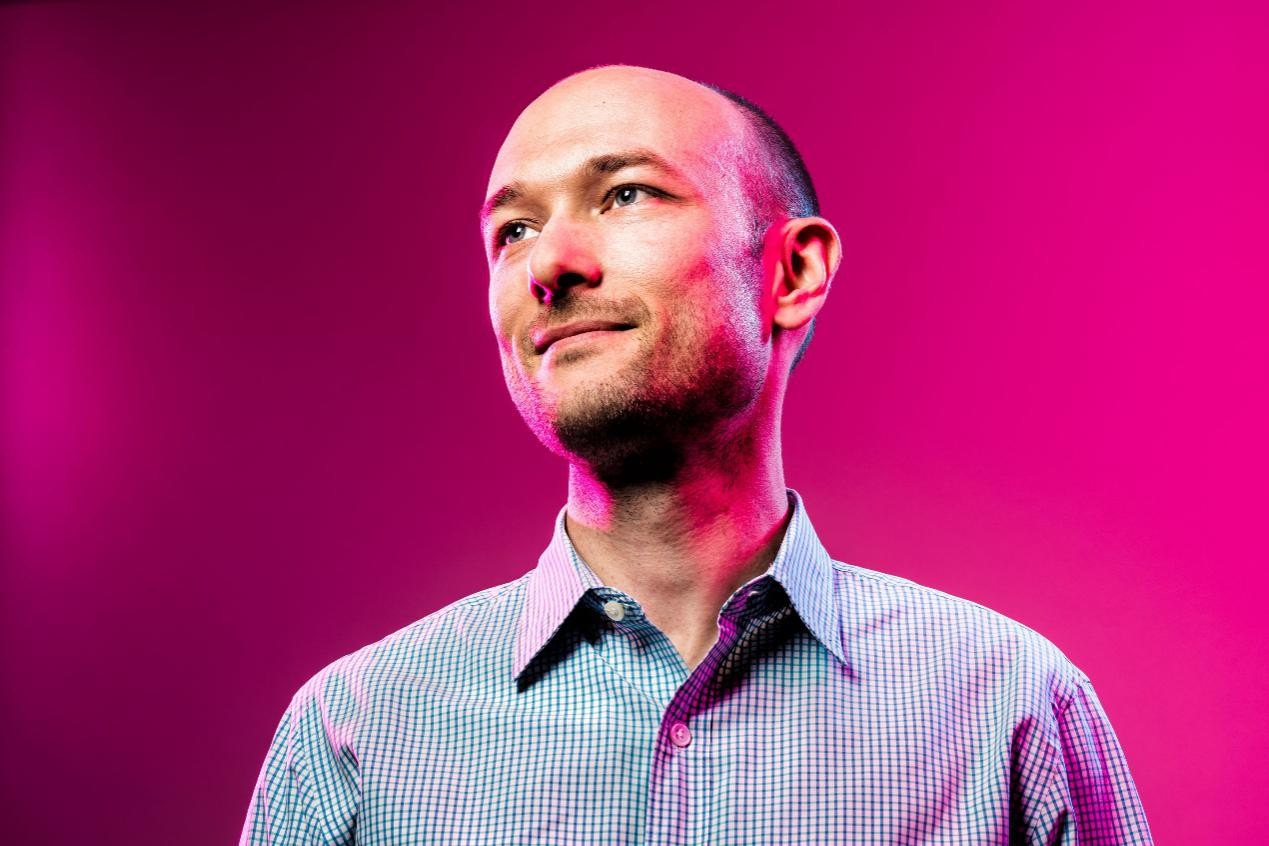
Lyft COE洛根·格林的童年在洛杉矶的高速公路上度过,这让他梦想着建立一家能减少上路汽车数量的公司,照片由Winni Wintermeyer为《财富》杂志拍摄
|
格林在洛杉矶长大,覆盖这座城市的高速公路网总是拥堵不堪。他说:“很多时候我都是坐在行驶的车里,看到每辆车里都只有一个人。”他用了很多时间来思考怎样改变这种局面,而后在附近的圣芭芭拉大学校园里建立了一家像Zipcar那样的租车公司,按小时收费。上学时,格林和一位朋友去了趟津巴布韦,在那儿他再次得到了启发。给予他灵感的是叫做Kombis的微型客车。无数辆Kombis组成了这个国家非正式“叫车”网络的主力军。回到美国后,他开始筹划一家拼车-配对服务公司,目标人群是开车回家的学生。 齐默是纽约人,在康奈尔酒店管理学院上学。学习做绿色城市的课程让他开始考虑交通基础设施问题,酒店管理作业则为他的思考提供了方向——围绕酒店类效率标准,也就是入住率和服务质量来制定交通策略会怎么样呢?齐默发现,美国汽车的平均使用时间只有4%,而且通常只坐一个人。他说:“这样的入住率很可怕,成本还高。我想建立一个更好的‘交通酒店’。” 大学毕业后,齐默成了雷曼兄弟的分析师。在那里,他开始为上述想法制定营销计划。一天,齐默在Facebook的共同好友页面看到了一个名叫洛根·格林的人发的帖子。齐默说:“里面写道,‘来看看我建立的这个网站Zimride.com’。我心想,他是从哪儿想出这个名字的?” 后来证实,“Zim”是津巴布韦的英文缩写,而Zimride就是格林的拼车服务公司。两个人见了面,而且因为志趣相投而变得亲密起来。2008年秋,也就是雷曼兄弟倒闭约一个月前,格林和齐默一起搬到了硅谷,把时间都花在了Zimride上。为了推广这个名字,两人有时会打扮成青蛙或河狸,在大学里转来转去。这样的游走营销起了作用——他们签下了150多名客户。然而,以大学为主,而且大多是长途行程限制了这家初创公司的发展前景。在公司的一次“编程马拉松”上,格林和齐默有了一个增长潜力更大的衍生想法,那就是Lyft,一个城市短途版的拼车服务公司。Lyft可以瞄准所有出行种类,包括大多数人最常做的短途出行。 |
Green grew up in Los Angeles, snared in its web of continually gridlocked freeways. “I spent a lot of time sitting in traffic, seeing one person in every car,” he says. He spent a lot of time pondering how to change that—and went on to launch a Zipcar-like, rent-by-the-hour car-rental service on his college campus in nearby Santa Barbara. During school, Green and a friend took a trip to Zimbabwe, where he encountered his next inspiration: Kombis, the myriad minibuses that make up much of that country’s informal “ride-hailing” network. He came back home and began plans for a carpool-matching service, aimed at students driving back home. Zimmer, a New York native, studied at Cornell’s School of Hotel Administration. A class called Green Cities got him pondering transportation infrastructure, and his hotel-management coursework informed his thinking: What if you built a transportation strategy around hospitality-like efficiencies, a.k.a. occupancy rates, and great service? The average American car is used only 4% of the time, Zimmer notes, typically with only one seat occupied. “It’s a horrible occupancy rate at a high cost,” he says. “I wanted to create a better ‘transportation hotel.’ ” After college, Zimmer became an analyst at Lehman Brothers, where he started working on a marketing plan for that idea. One day, while perusing Facebook, he ran across a post by a guy named Logan Green on a mutual friend’s page. “It said, ‘Check out this website I’m starting, Zimride.com,’ ” says Zimmer. “I was like, ‘Where did he come up with this name?’ ” “Zim” was short for Zimbabwe, it turned out, and Zimride was Green’s carpool service. The two met and bonded over their mutual passion, and in the fall of 2008, about a month before Lehman’s collapse, both moved to Silicon Valley to devote their time to Zimride. To spread the word, the duo would sometimes dress as frogs or beavers and parade around universities. The guerrilla marketing worked—upwards of 150 clients signed up—but focusing on colleges and mostly long-distance trips limited the startup’s prospects. At a company “hackathon,” Green and Zimmer came up with a spinoff idea with greater growth potential: Lyft, an urban, short-rides variation on the carpool. Lyft could target all kinds of rides, including the shorter trips most people make more frequently. |
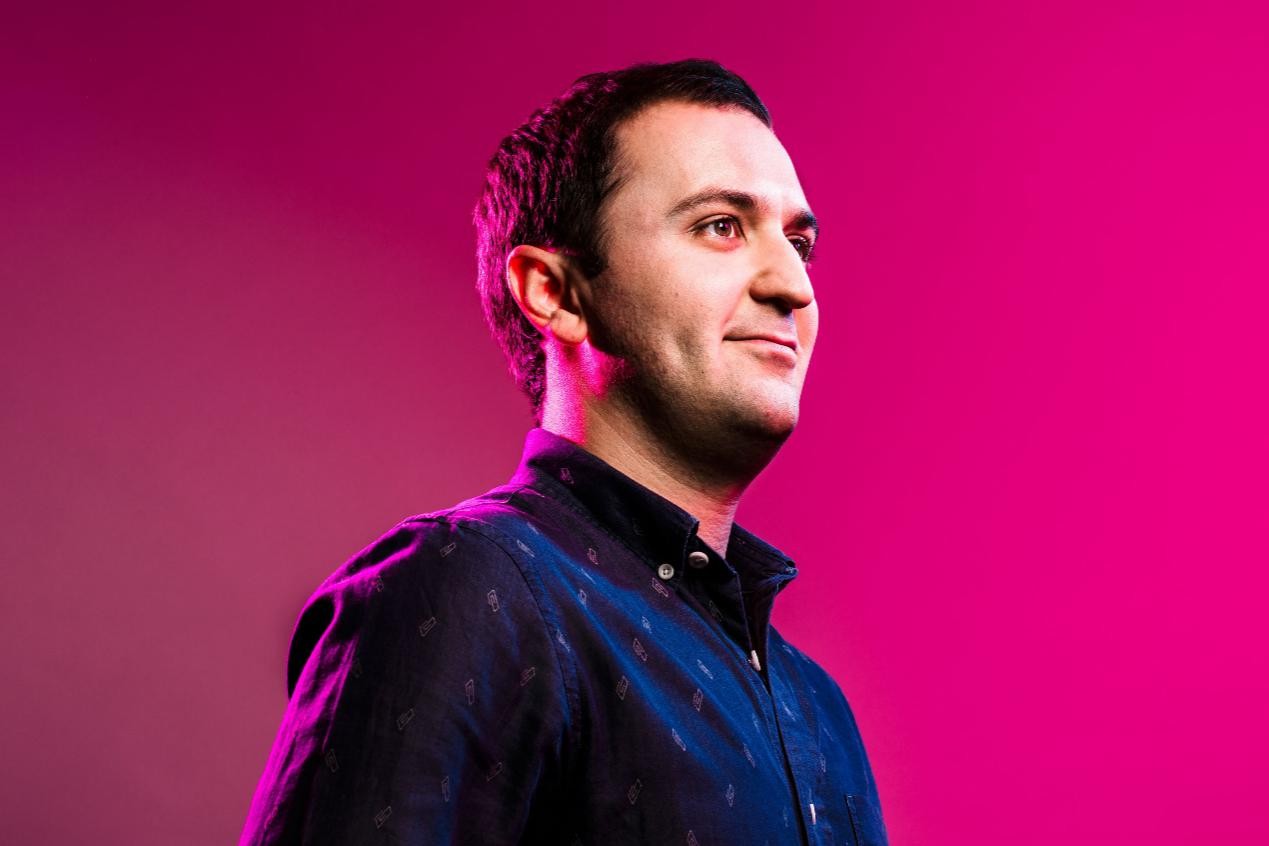
|
2012年,两人把Zimride转让给了Enterprise Holdings,但未披露交易金额。一起工作了五年后,他们把全部注意力转到了Lyft身上。 当时优步已经经营了四年,只是和如今大多数人所知的优步还有些差别。优步最初的愿景是把乘客和“黑色高级轿车”联系在一起。如果说Lyft的哲学受到了Zimride公用理想主义的影响,优步的哲学则更像技术人士自由论,即 用技术来优化交通是一种更好的做法,这不是因为它可以减少上路汽车的数量,而是因为向大众提供的现行方案根本就很糟糕。 的确,优步用户乘坐的是专业司机驾驶的较高档汽车,Lyft则从一开始就利用驾车人的现有车辆,无论是高档车还是破车。Lyft鼓励乘客坐在前排,跟司机顶拳,并向车主几个用于贴在保险杠上的毛茸茸的“粉色胡子”(去年Lyft放弃了这个傻傻的装饰物,转而采用可以附着在仪表盘上的LED彩灯)。 超越优步并非易事,但无人驾驶技术有可能给Lyft带来平等的竞争环境,更不用说让它盈利了。 实际情况表明,多数消费者想要的模式是车辆共享。Lyft成立于2012年;不久之后,优步也推出了自己的拼车功能,从而使所有有车一族都成了司机。这种模式很快成为优步的主导服务,一个强有力的对手出现了。 这是一场很大程度上一边倒的竞争。网络完善、资金充足的优步在多个城市、国家和地区大力进行推广,并且选择了“快速部署,随后道歉”的策略。成为拼车行话中默认动词的是优步,而不是Lyft。(“我刚优步过来。”)如今优步的业务已经遍及全球600多座城市,Lyft则只进入了350座城市,而且都是美国城市。创立至今,Lyft一共做了4亿单;而在差不多相同的时间里,优步做了50亿单。 当然,亚军想超越冠军一直是众所周知的心态。远在2017年优步丑闻缠身之前,公众情绪就已经向Lyft倾斜。在开拓新市场方面,优步采用了“焦土政策”,也就是把当地政府视为障碍,而不是合作伙伴或征得同意的对象。这种做法让优步的律师一直有事可做而且有钱可赚,也给愤怒的维权人士和社论作者带来了几乎差不多的工作量。虽然优步把自己的版图延伸到了77个国家和地区,而且扩大了收入渠道,但它也给自己带来了惹人注意的争论和挫折。最终,这家公司实际上放弃了在俄罗斯和中国市场的开拓,采取了将自身业务和更大、更成功的对手进行合并等措施。 |
By 2012, the duo had sold Zimride to Enterprise Holdings for an undisclosed amount. After five years of working together, they turned their full attention to Lyft. By then, Uber had been in business for four years—though it wasn’t the Uber most know today. The company’s original mission was to connect passengers with “premium black cars.” If Lyft’s philosophy was colored by Zimride’s communal idealism, Uber’s was more tech-bro libertarian: Using technology to optimize transportation is better not because it will get cars off the street, but because the status quo offered to the masses inherently sucks. Indeed, while Uber users rode in relatively luxurious vehicles behind professional drivers, Lyft utilized drivers’ existing cars from the get-go—whether high-end or hoopty. Lyft encouraged riders to sit up front and exchange fist bumps with their driver, and gave car owners pink, fuzzy mustaches to attach to their bumpers. (Last year, the company ditched the goofy decor elements in favor of multicolored-LED gadgets that attach to dashboards.) Leapfrogging Uber won't be easy, but driverless tech could even the playing field for Lyft—not to mention make it profitable. It turned out car sharing was the model more consumers wanted. Lyft launched in 2012; Uber announced its own car-sharing function—letting anyone with a car become a driver—shortly after. That version quickly became Uber’s dominant service, and a fierce rivalry was born. It’s a rivalry that has been largely lopsided. Well-connected and well-capitalized, Uber aggressively launched in multiple cities and countries, opting for a “move fast, apologize later” strategy. Uber, not Lyft, became the default verb in ride-sharing lingo. (“I’ll just Uber over.”) While Uber’s reach now encompasses more than 600 cities worldwide, Lyft is available in just 350 and only in the U.S. Since its launch, Lyft has completed 400 million total rides; in roughly the same time period Uber has given 5 billion rides. To be sure, No. 2s have been known to pull ahead of No. 1s. And public sentiment has been tilting Lyft’s way since long before Uber’s scandal-filled 2017. In adding new markets, Uber employed a scorched-earth strategy: Local governments were an impediment, not an entity to partner with or seek approval from. That approach has kept Uber’s lawyers gainfully employed—and generated almost as much work for angry activists and editorial writers. And while Uber expanded its empire to 77 countries, broadening its revenue opportunities, it also exposed itself to high-profile spats and setbacks. The company has wound up essentially giving up on penetrating the markets in both Russia and China, for example, merging its operations with bigger and more successful rivals. |
|
当然,Lyft可以有远大目标并且依靠自身力量。对于这家规模小于优步的初创公司,一直有人批评它先是让优步在新市场突破监管障碍,然后轻而易举地走进去(并且带着它的“蠢胡子和友善的公关部门”,网络刊物Vox最近如是说),并且利用优步打开的缺口(Lyft负责政府关系的副总裁乔·欧克帕库说:“我完全不同意这样的说法。有些市场是[优步]先进入了,有些则是我们。”) 自动驾驶汽车的规模不断壮大,而市政负责人们显然希望与之建立更好的关系。洛杉矶市市长埃里克·贾赛提表示:“我们不知道这项技术究竟会带来什么样的未来。我们必须放开思路,但要把重点放在制定有切实目标的政策上,以便改善安全性、公共交通、数据共享和基础设施。” 在拼车两巨头中当“好人”可能有助于Lyft的长期发展的又一原因。无论Lyft是否利用过优步建立的关系,它绝对选择了少“打仗”——包括和自己的70万名司机。和优步一样,Lyft也曾遭到司机集体起诉,后者希望被定义为员工,而不是独立承包商。但最近的调查显示,跟Lyft合作的司机比优步司机快乐。这并不意外。就在卡兰尼克呵斥司机的视频四处传播时,Lyft的顶拳文化则一直在劝说消费者将驾车人视为同行者,而不是自己雇来的司机,更不用说是撒气筒了。值得注意的是,Lyft司机平均挣的钱也更多,而且这家公司在建立之初就推出了app内打赏功能。优步则直到今年夏天才推出了给小费功能。 夏一个炎热的下午,Lyft在凤凰城的新“司机中心”充分体现了这种公司-司机关系的特质。很难把距机场10分钟车程的工业办公园区弄得像怪异的硅谷员工酒吧,但你得让Lyft试一试。作为Lyft司机会面和寻求帮助的场所,这个新设立的中心挂的海报上都是体育标语——“主宰自己”、“把握道路”。一托盘、一托盘的曲奇饼和一罐罐紫红色糖果就在眼前。就连椅子也是粉红色的,它们排的整整齐齐,静待题为“和Lyft一起上路”的会议开场。 马上就到5点时,司机们开始入场。有老有少,有些人头发灰白,有些人把头发染成蓝绿色,还有些是光头。一位最近才搬到凤凰城的女士说,她根本不知道Tempe在哪,又怎么能把人送到那里呢? 凤凰城有大约3万名Lyft司机。今晚,约50名司机前来学习怎样使用Lyft的app。Lyft员工斯蒂芬妮·雷诺兹曾是Lyft司机,戴着粉红色眼睛,拿着类似色调的笔记本电脑。她回答着这些司机最关心的问题——要是有人吐在你车里了怎么办?(拍照,然后发送给Lyft。)要是乘客带着不在服务范围内的动物怎么办?(雷诺兹说:“我不会拒绝任何宠物,除非它长得像《狂犬惊魂》里的那条狗。”) 有位司机问了一个比较哲学的问题:“一名潜在司机为什么会选择Lyft,而不是优步?”雷诺兹迅速回答说:“我不会谈论优步。我爱这家公司是因为它主张的那些东西。” |
Of course, Lyft can be ambitious and calculating in its own right. The smaller startup has been criticized for letting Uber fight regulatory hurdles in new markets, then waltzing in (with its “dumb mustaches and friendly PR operation,” as online publication Vox recently put it) to take advantage of the openings. (“I wholeheartedly disagree with that narrative,” says Joe Okpaku, VP of government relations at Lyft. “Some markets [Uber] entered first, some we entered first.”) There's clearly desire among civic leaders to have better relationships with the growing autonomous-vehicle community. "We don’t know exactly what the future of this technology will bring," says Eric Garcetti, the mayor of Los Angeles. "We have to keep our minds open, but stay focused on creating policies with tangible goals to improve safety, public transportation, data sharing, and infrastructure." That's one more reason it may help Lyft in the long run to be the "nice guy" in the ride-share duopoly. Whether or not Lyft has ridden Uber’s coattails, it has definitely picked fewer battles—including with its 700,000 drivers. Like Uber, Lyft has been the subject of class-action lawsuits brought by drivers who sought to be classified as employees, not independent contractors. But recent surveys show that Lyft’s drivers are happier with their experience than Uber’s. It’s not surprising. While Uber’s Kalanick was caught on camera berating a driver in a video that went viral, Lyft’s fist-bump ethos has long nudged customers to see drivers as peers rather than chauffeurs—let alone punching bags. Notably, Lyft drivers also make more money, on average, and the company has enabled “in-app” tipping since its launch. Uber, meanwhile, only got around to offering a gratuity-giving feature this summer. The idiosyncrasies of the company-driver relationship are on full display on a hot summer afternoon at Lyft’s new “driver hub” in Phoenix. It’s hard to make an industrial office park 10 minutes from the airport look like a quirky Silicon Valley employee’s lounge, but you have to hand it to Lyft for trying. The newly opened space, a meeting place for drivers looking for help, is decorated with posters sporting mantras like “Be Your Own Boss” and “The Road Is Your Oyster.” Platters of cookies and jars of magenta-colored candies are on hand. Even the chairs are pink, set out in neat rows for a “Driving With Lyft” session. Just before 5 p.m., drivers start wandering in. Some are old, some are young. Some have gray hair, some have turquoise, some have none. One recently moved to Phoenix and says she doesn’t know where the hell Tempe is so how is she supposed to drive people there. Lyft has more than 30,000 drivers in Phoenix, and tonight, about 50 have gathered to learn how to use Lyft’s driver app. Stephanie Reynolds, a Lyft employee and former driver with pink glasses and a similarly hued laptop, answers their most burning questions: What do you do if someone barfs in your car? (Take a picture and send it to Lyft.) What if a passenger has a non–service animal? (“I don’t turn down any pets unless they look like Cujo,” says Reynolds.) Another driver asks a more philosophical question: “Why would a potential driver choose Lyft over Uber?” Reynolds quickly responds: “I’m not going to talk about Uber. I love this company because of what it stands for.” |
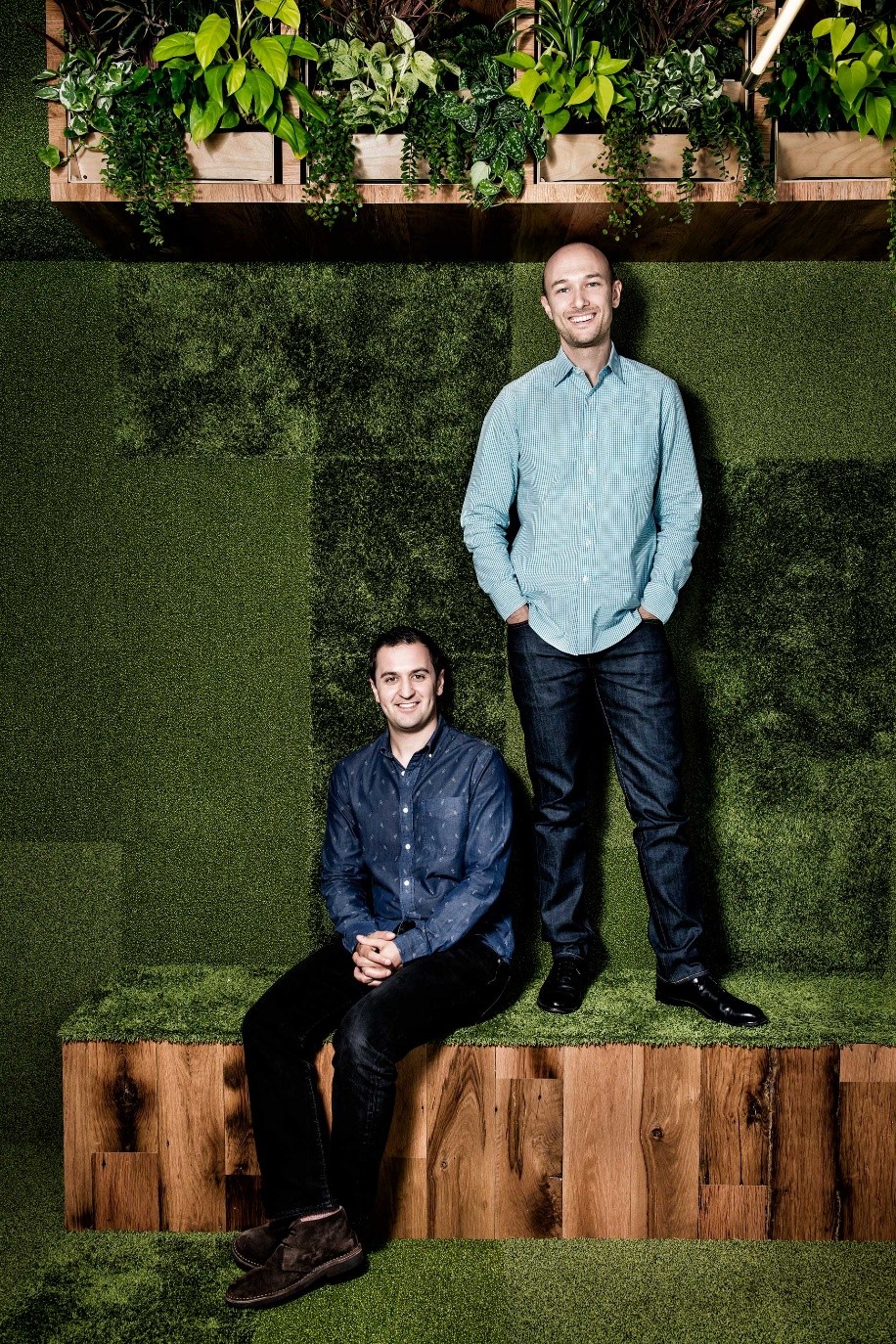
|
如果说Lyft主张和司机建立良好的关系,那么这个标签也许很快就会面临挑战。大多数Lyft和优步司机都是兼职。消费贷款初创公司Earnest提供的数据显示,Lyft和优步司机的月均收入分别只有377美元和364美元。但大家知道谁的成本更低吗?机器人。 优步和Lyft司机每单可以拿75%-80%的分成。自动驾驶车辆则不需要分成,更不用说它们差不多所有的时间都在工作。无数种因素正在推着优步和Lyft朝着这个方向迈进,大家知道:公司应该赚钱的观点只是其中之一。 受其特点影响,优步向这个目标迈进的速度更快,而且更大胆。2015年,优步和卡耐基梅隆大学的机器人科学系签订研究协议,然后挖走了该系40名顶尖研究员,并以他们为基础在匹兹堡建立了先进技术中心——此举引起了很大争议。优步并不是单纯跟研究方合作,它还想自主开发自动化系统的各个组成部分,从摄像头到传感器,再到软件和导航。 2016年优步又干了件大事,收购了自动驾驶卡车初创公司Otto。这次收购最终给优步的计划带来了一个超级大麻烦。Otto的联合创始人安东尼·莱万多夫斯基曾是Waymo的工程师,也一直处于这场著名官司的中心。Waymo指控他窃取了知识产权并把这些知识产权带到了优步。这是特别有煽动性的指控,因为优步已经开始让莱万多夫斯基负责无人驾驶汽车的研究工作。在预审中,莱万多夫斯基自始至终都保持沉默,他通过律师说,《美国宪法第五修正案》赋予了他“不能被强迫自证其罪”的权力。今年5月,优步解雇了莱万多夫斯基,并称这样做的原因是后者没有跟调查人员合作。大家可以想到,据说这场闹剧让优步的自动驾驶汽车团队运转失灵,人心涣散(优步一位发言人告诉《财富》杂志,虽然一直有人离职,但并未发生人员大量流失的情况,而且这场官司也没有影响到优步与合作汽车厂商,也就是沃尔沃和戴姆勒的试点项目)。 与之相反,Lyft涉足自动化领域较晚。它和通用汽车签订自己的第一份无人驾驶汽车合作协议的时间比优步在匹兹堡的先进技术中心破土动工几乎晚了一年。但风投人士、Lyft投资人兼董事本·霍洛维茨认为起步晚实际上对Lyft有利。他告诉《财富》杂志,这让Lyft“可以利用这项技术的快速进步”,特别是在机器学习以及帮助无人驾驶汽车进行自我掌控的LiDAR传感器方面。 |
To the extent that Lyft stands for good driver relationships, that identity may soon be challenged. Most Lyft and Uber drivers are part-timers, bringing in an average of just $377 and $364 a month, respectively, according to consumer-lending startup Earnest. But you know who’s cheaper? Robots. Uber and Lyft each pay drivers between 75% and 80% of the total fee for each ride. Autonomous vehicles require no such cut, not to mention that they can be utilized nearly 100% of the time. This is the direction in which Uber and Lyft are being pushed by forces too numerous to count—not least the idea that businesses should, you know, earn profits. Characteristically, Uber raced toward this reality faster and more aggressively. In 2015, the company struck a research pact with Carnegie Mellon’s robotics department, then made the controversial move of poaching 40 of its top researchers, setting up an Advanced Technologies Center with the looted talent in Pittsburgh. Rather than simply partner with researchers, Uber wanted to develop the building blocks of autonomous systems, from cameras and sensors to software and mapping, by itself. In 2016 Uber made another big move, buying a self-driving truck startup called Otto. That acquisition wound up throwing a big-rig-sized wrench in Uber’s plans. Otto’s cofounder, Anthony Levandowski, is a former Waymo engineer, and has been at the center of the high-profile lawsuit. Waymo alleges that he stole IP and took it to Uber—a particularly incendiary allegation, because Uber had put Levandowski in charge of its driverless-car research efforts. Throughout pretrial proceedings, Levandowski has stayed mum-—invoking, through his attorney, his Fifth Amendment rights against self-incrimination. In May, Uber fired him, saying it had done so for failing to cooperate with investigators. The brouhaha, as you’d expect, has reportedly created dysfunction and distraction in Uber’s autonomous-vehicle ranks. (An Uber spokesperson tells Fortune that while there have been departures, there hasn’t been an exodus, and the lawsuit hasn’t impacted pilot programs with its automaker partners, Volvo and Daimler.) Lyft, in contrast, was late to the autonomous party—it inked its first driverless-car partnership, with GM, almost a year after Uber broke ground in Pittsburgh. But Ben Horowitz, the venture capitalist who’s a Lyft investor and board member, argues being late actually works in Lyft’s favor: He tells Fortune it has positioned the company to be “able to capitalize on rapid advances in the technology,” specifically in the machine learning and lidar sensors that help driverless cars pilot themselves. |
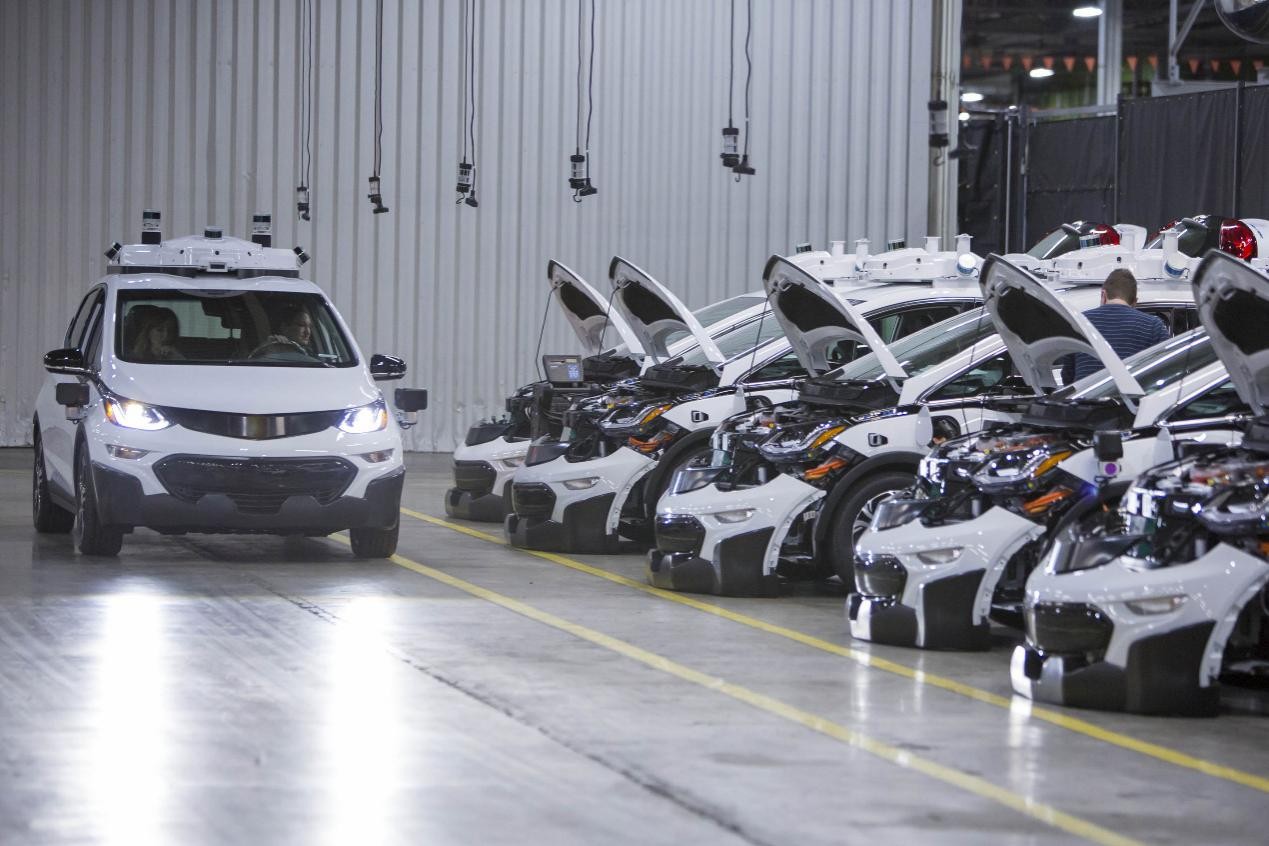
|
Lyft看到了机会以及迅速行动的必要性。在这方面,本周Lyft将发布在它看来可能成为杀手锏的app,或者说开发出一整套技术,从而使所有汽车厂商都能为Lyft的拼车网络推出自动驾驶车队。虽然到目前为止Lyft对这项合作的贡献基本上限于把其他公司的技术和它的司机网络连接起来,但这项工作的目标很高——为未来的汽车开发并提供“五脏六腑”和“大脑”(还有脸面,或者说界面)。大家可以把它想象为装在盒子里的自动驾驶汽车,所有东西都在里面,只差真正把车组装起来。 Lyft产品总监塔加特·马西森说:“以前Lyft从未制造过汽车,以后也不会。”但它正在探索自动化开发的所有其他领域。Lyft希望自己的推介能吸引合作伙伴——它将为司机和乘客提供导航软件和实体界面,以及自动驾驶的其他关键零部件,这样汽车厂商就不必自己去开发这些部分了。 Lyft并未说明究竟会在什么时候提供这套技术,或者其中的组成部分到底是何面貌。但他们确实提到了一个吸引人的要素,那就是该公司粉红胡子的技术等价物,或者说一个让“机器人开车”的体验变得更友好的用户界面,它可以向乘客展示车辆传感器“看到”和“想到”的东西。除了在屏幕上展示车辆摄像头拍摄的实时画面,这个系统还将具备语音功能,作用是解释车辆正在做什么以及为何要这样做。(想象一下,一个让人放心的声音用聊天的语气对你说:“嘿,我看到了一辆自行车。”)显而易见,Lyft希望自己可以把车变得人性化,并让乘客了解车辆的“心思”。 Lyft的管理层相信,对用户体验的关注可能有助于他们赶超优步。齐默指出,总的来说优步和Lyft一样可靠,对消费者的收费也别无二致,“那么接下来就完全要看品牌和体验了”。用齐默最喜欢的表达方式来说就是,假设自己在纽约的人行道上,和你距离相同而且价格一样的酒店有两家。你会选哪一家呢?也许是跟你顶拳的那一家? 如果Lyft押对了方向,那么使用无人驾驶拼车服务的消费者更重视的就是看到让人信任的品牌,而不是谁制造了传感器和软件。同时,这种信任进而有可能帮助Lyft吸引更多汽车制造合作伙伴。 但司机或许不那么热心。自动驾驶方面的进展将大大提高Lyft当“好人”的难度。高盛的报告认为,成熟后,无人驾驶技术每年会“消灭”30多万个就业机会。许多司机担心,技术会在拼车市场撕开一道口子,就连不需要福利的兼职车辆也能借此为很多人造福。 Lyft的两位创始人认为,在可预见的时间内,司机数量将继续增多。他们指出,向自动化的转移不会一蹴而就。同时,到2030年拼车行业预计将增长八倍,对司机的需求也将水涨船高。 这种需求会减少吗?会在什么时候减少呢?Lyft的两位创始人讨论这种可能性时,他们的乌托邦理想就显露了出来。心里住着一位酒店老板的齐默说,自动驾驶汽车将成为“有轮子的房屋,实际上你需要的是招待,它是轮子上的电影院吗?还是轮子上的办公室,或者星巴克?乘客可能需要为这样的服务额外付费,而且我们希望可以创造出很多就业机会”。 在最早实施的一批试点项目中,自动驾驶汽车已经在加州、亚利桑那和宾夕法尼亚上路,但只能在测试区域行驶。监管部门目前还要求这些车辆配备人类驾驶员,以便在出现意外时控制车辆。但大多数业内人士都认为,纯粹的自动驾驶汽车得到广泛应用的时间将远早于公众的预期。 对Lyft和优步来说,这场革新是一个重大转折点。优步前CEO卡兰尼克有句名言,那就是向自动化转移对优步能否生存下去至关重要。当然,那是在去年,他还没有遇到另一个更加生死攸关的考验,也就是挽救优步的声誉。 Lyft面临的是另一种挑战。这家长期处于下风的公司制定出了一种战术,这也是多年来其他位居次席者一直使用的战术,那就是当好人,做好事。但如果Lyft借助目前的势头持续实现超过预期的增长,或者说,嗯,像优步那样的增长,它维持好人光环的难度也许就会变大。 但Lyft的理想主义二人组并未对此感到烦恼。齐默说:“我觉得想赢的心态跟我们的愿景一点儿也不抵触。”在汽车自动行驶的世界,乌龟跑赢兔子似乎并不那么牵强。 本文将刊登在2017年8月1日出版的《财富》杂志上,题目是《#击败优步》。(财富中文网) 译者:Charlie 审稿:夏林 |
Lyft sees its opportunity, and the need to move fast. To that end, the company this week will announce what it thinks could be its killer app: the development of a “full stack” of technology that will enable any auto manufacturer to roll out self-driving fleets on Lyft’s ride-sharing network. While Lyft’s contribution to its partnerships, until now, has mostly involved connecting other companies’ tech to its network of drivers, this ambitious undertaking aims to develop and supply the guts and brains (and face, or interface) of future vehicles. Think of it as a self-driving car in a box that contains everything but the actual car. “Lyft has never built a car, and we never will,” says Taggart Matthiesen, Lyft’s director of product. But it is exploring all other areas of autonomous development. And it hopes its pitch to partners will be an enticing one: It will offer mapping software, physical interfaces for drivers and passengers, and other key components of autonomous driving, so manufacturers don’t have to create all those building blocks themselves. Lyft isn’t yet disclosing exactly when the stack will be available, or exactly what its components will look like. But one compelling ingredient they do discuss is the technological equivalent of its pink mustache—a user interface aimed at making the experience of being “robo-driven” friendlier, by showing passengers what the car’s sensors are “seeing” and “thinking.” In addition to a screen that will show real-time footage from the car’s cameras, the system will include a voice function that explains what the vehicle is doing and why. (Imagine a soothing, conversational voice telling you, “Hey, I see a bike.”) Obvious as that may sound, Lyft’s hope is that it can humanize the car and let passengers peer inside its mind. Lyft execs believe this focus on user experience could help it push ahead of Uber. All things considered, Uber and Lyft are equally reliable and charge customers identical prices, Zimmer notes, “So now it’s all about the brand and experience.” Put in terms Zimmer loves best: Imagine you’re on a sidewalk in New York and two hotels are the same distance from you and the same price. Which do you choose? Maybe the one that gives you fist bumps? If Lyft’s bet is right, customers dabbling in driverless ride-hailing will care more about seeing a trusted brand than about who makes the sensors or software—and that trust, in turn, could help Lyft attract more automaking partners. Its drivers, though, might be less enthused. Progress on the autonomous side will make it a lot harder for Lyft to play the nice guy. According to a report from Goldman Sachs, once it matures, driverless technology will eliminate upwards of 300,000 jobs a year. And many drivers fear that the tech will cut a swath through ride sharing, where even a part-time gig without benefits is beneficial to many. Lyft’s founders contend that driver growth will continue for the foreseeable future. The shift to autonomous won’t happen overnight, they note. And with the ride-sharing industry expected to grow eightfold by 2030, the need for drivers will keep ballooning with it. If and when it tapers off? As the founders discuss the possibility, their utopianism surfaces. Self-driving cars will be “rooms on wheels,” says Zimmer, the hotelier-at-heart. “You’ll actually need folks as hosts. Is it a movie theater on wheels? Or an office on wheels, or a Starbucks on wheels? Passengers could pay a premium for these types of services, and our hope is that we can create many more jobs.” Already cars are driving themselves in California, Arizona and Pennsylvania, in some of the earliest pilot launches. Autonomous vehicles are restricted to specific test areas. Regulators also currently require that they have actual human drivers in them—to take the wheel if things go wrong. But most insiders agree that fully self-driving vehicles will be in wide use much sooner than the public expects. For Lyft and Uber, this evolution represents a massive turning point. Kalanick, Uber’s former CEO, famously called the move to autonomous crucial to his company’s ability to survive. Of course, that was last year, before he was faced with an even bigger existential quandary: rescuing his company’s reputation. Lyft’s challenge is different. Long the underdog, it has thrived on a tactic that other No. 2s have used over the years: being the nice guys and the do-gooders. But if the company rides its current momentum to sustained, faster-than-before growth—growth that’s, well, Uber-like—its halo may be harder to maintain. That doesn’t faze Lyft’s idealistic duo. Says Zimmer: “I don’t think that wanting to win is at all in contradiction with our mission.” And in a world where cars drive themselves, a tortoise beating a hare doesn’t seem all that farfetched. Correction: An earlier version of this article inaccurately described Uber's handling of its "surge pricing" in New York City during protests in January over President Trump's travel ban. A version of this article appears in the Aug. 1, 2017 issue of Fortune with the headline "#DefeatUber." |













